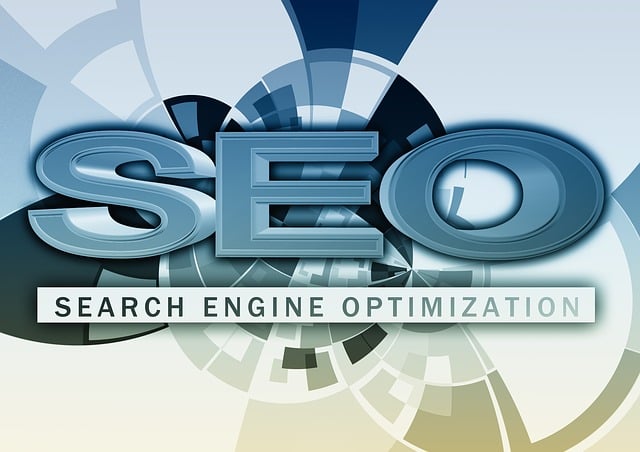On-Page SEO is crucial for new websites' success, enhancing visibility and rankings on SERPs through optimizing key elements like meta tags, headers, content, and site structure. Effective strategies include keyword-driven content creation, user experience (UX) optimization, internal linking, and regular audits to stay relevant in search engine algorithms. Investing early in SEO services for new sites significantly contributes to long-term online success in a competitive digital landscape.
Launching a new website is an exciting step, but ensuring its online success requires strategic on-page SEO. This comprehensive guide delves into the essential practices for optimizing your new site’s visibility and user experience. From understanding core concepts to implementing technical improvements, we’ll explore why on-page optimization matters. Learn about critical elements like content crafting, meta tags, structure, internal linking, and regular audits—essential SEO services for new websites aiming to thrive in today’s digital landscape.
Understanding On-Page SEO for New Websites

On-Page SEO is a fundamental aspect of optimizing new websites for search engines. It involves refining various elements within a website’s code and content to enhance its visibility and relevance. For newcomers to the digital landscape, understanding this process is crucial for achieving online success. By implementing effective on-page strategies, new websites can significantly improve their rankings in search engine results pages (SERPs).
SEO services for new websites play a pivotal role in guiding businesses through this process. These services focus on optimizing critical factors like title tags, meta descriptions, header tags, and content to ensure they align with the latest search engine algorithms. Through keyword research and strategic content creation, SEO experts can help new sites attract the right audience and establish a solid online presence from the get-go.
Why On-Page Optimization is Crucial for New Sites

For new websites, on-page optimization is akin to laying a solid foundation. It’s the process where we fine-tune every element on a webpage to make it highly relevant and accessible to search engines. This is crucial because search algorithms are designed to reward content that aligns with user intent, and on-page SEO ensures your site speaks the language of both users and search engines.
When launching a new website, neglecting on-page optimization can be detrimental in the competitive digital landscape. It’s the first step in attracting organic traffic and establishing authority. By optimizing meta tags, headers, content, and images, we enhance crawlability, improve load speeds, and signal to search engines what your site is about. This early investment in SEO services for new websites pays dividends over time, setting the stage for long-term success and visibility.
Key Elements of Effective On-Page SEO

When crafting SEO services for new websites, focusing on key elements is paramount. Firstly, optimizing page titles and meta descriptions ensures your content is accurately represented to search engines and users, facilitating better click-through rates. Engaging and descriptive titles, coupled with concise and compelling meta tags, can significantly enhance visibility.
Additionally, effective on-page SEO involves leveraging keyword strategies. Researching and integrating relevant keywords into headings, subheadings, and body text allows search algorithms to understand your content’s context. This synergizes with quality content creation; crafting informative, engaging, and unique copy that satisfies user intent not only improves rankings but fosters a positive user experience, encouraging longer visits and lower bounce rates.
Optimizing Website Structure and Navigation

Optimizing website structure and navigation is a crucial step in enhancing the visibility of new websites through on-page SEO services. A well-structured site with intuitive navigation helps search engines understand your content better, leading to improved rankings. Start by creating a hierarchical structure using relevant categories and subcategories that logically organize your pages. Each page should have a unique and descriptive URL, making it easier for both users and search engines to locate specific content. Implement a clear and consistent internal linking strategy, connecting related pages within your site to boost user experience and distribute link equity.
Additionally, ensure that your website’s navigation menu is prominently displayed and easily accessible across all pages. Use clear labels and avoid jargon or vague terms. Breadcrumb navigation can also be beneficial, providing users and search engines with a sense of the page’s position relative to the site’s main categories. Regularly review and update your site map to reflect any changes in content or structure, facilitating efficient crawling and indexing by search engine bots.
Crafting Compelling and SEO-Friendly Content

Crafting content that is both compelling and optimized for search engines is a key aspect of On-Page SEO, especially for new websites. When developing content, it’s essential to strike a balance between engaging your target audience and incorporating relevant keywords naturally. This involves thorough keyword research to identify terms and phrases that your ideal visitors are using when searching for products or services related to your niche. By weaving these keywords into your website’s copy, headings, meta descriptions, and image alt tags, you enhance the site’s visibility in search results.
SEO Services for New Websites go beyond just content creation. It also entails structuring content in a way that makes it easily scannable by search engine algorithms. This includes using short paragraphs, bolded or italicized text for emphasis, and incorporating bullet points or lists to break down complex information. Additionally, ensuring your website’s loading speed is optimized and implementing responsive design principles can significantly impact user experience, encouraging visitors to stay longer and interact more, which are crucial factors in On-Page SEO.
Leveraging Meta Tags for Better Visibility

Meta tags are essential components in the world of On-Page SEO for new websites. These tags, including title tags and meta descriptions, provide search engines with crucial information about your web pages. A well-optimized title tag should accurately represent the page’s content while incorporating relevant keywords to boost visibility in search results. For instance, when offering SEO services for new websites, a strategic title tag can significantly enhance the chances of potential clients finding your site.
Meta descriptions, on the other hand, offer a brief overview of what users can expect from a specific webpage. While they don’t directly impact rankings, compelling meta descriptions encourage click-throughs, driving more organic traffic to your website. Crafting persuasive meta descriptions that entice users while aligning with your target keywords is an effective strategy to increase engagement and improve overall online visibility for new websites.
Enhancing User Experience: A Must for SEO Success

A new website is a blank canvas, and on-page SEO plays a pivotal role in transforming it into a conversion machine. Beyond optimizing meta tags and content for search engines, enhancing user experience (UX) is fundamental for long-term SEO success. Users expect seamless navigation, fast loading times, mobile responsiveness, and relevant, high-quality content. When a website delivers these experiences, users are more likely to engage, stay longer, and ultimately convert, signaling to search engines that the site is valuable and worthy of a higher ranking.
Investing in UX isn’t just about ethical considerations; it’s also a powerful SEO strategy. Search engine algorithms prioritize user satisfaction, so websites with excellent UX tend to climb the rankings. By ensuring your new website is built for both users and search engines, you’re setting yourself up for sustained online visibility and growth through effective SEO services for new websites.
The Role of Internal Linking in New Website SEO

Internal linking plays a pivotal role in optimizing new websites for search engines. By strategically connecting relevant pages within your site, you create a seamless navigation experience for users and send powerful signals to search algorithms. This interlinking helps distribute page authority, indicating to search engines that your website is well-organized and worth ranking higher.
Effective internal linking also improves crawlability, ensuring search engine bots can access and index all your web pages efficiently. When implementing this SEO strategy, focus on creating relevant anchor text that includes keywords related to the linked page’s content. This practice enhances both the user experience and the site’s overall SEO performance, making it an essential component of any successful SEO services for new websites.
Regularly Auditing and Updating On-Page Elements

Regularly auditing and updating on-page elements is a crucial aspect of providing top-tier SEO services for new websites. It ensures that content remains relevant, accurate, and optimized for search engine algorithms. By setting up a consistent audit schedule, you can identify areas where improvements are needed and make data-driven decisions to enhance search visibility.
This process involves regularly checking meta titles and descriptions, header tags, image alt text, and overall content quality. Updates should be made to reflect the latest industry trends, incorporate new keywords, and adapt to changes in user behavior. Such continuous optimization helps in maintaining a strong online presence and keeps your website ahead of the competition in search results.
